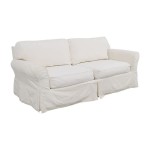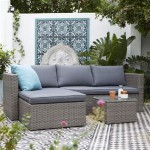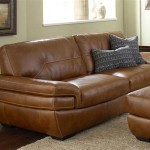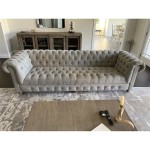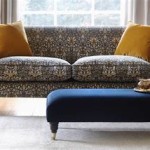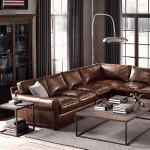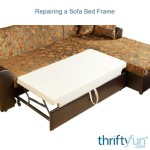Small Apartment Sectional Sofas: Maximizing Space and Style
Sectional sofas are often perceived as furniture reserved for large living spaces. However, the modern furniture market has expanded to include sectional options specifically designed for smaller apartments and compact living areas. These small apartment sectional sofas offer a compelling solution for individuals seeking comfort, style, and maximized space utilization without overwhelming their limited square footage. Understanding the nuances of these sofas is crucial for informed purchasing decisions.
The versatility of a sectional sofa is a significant benefit in a small apartment. Unlike traditional sofas, sectionals can be configured to fit the specific dimensions and layout of the room. The individual sections can be rearranged to create different seating arrangements, adapt to changing needs, or even be separated and used as individual chairs. This adaptability makes a sectional a practical choice for maximizing functionality in a confined space.
Choosing the right small apartment sectional sofa requires careful consideration of several factors, including size, configuration, material, and style. Ignoring these factors can lead to a purchase that detracts from, rather than enhances, the living space. This article will examine key aspects of small apartment sectional sofas to provide a comprehensive guide for potential buyers.
Understanding Size and Configuration
The primary concern when selecting a sectional sofa for a small apartment is its size. Measuring the available space is essential before even beginning the selection process. Accurate measurements, including length, width, and height, will help determine the maximum dimensions that can be accommodated without overcrowding the room. Consider also the placement of doorways, windows, and other furniture to ensure a seamless fit.
Small apartment sectionals are typically available in several configurations, including L-shaped, U-shaped, and modular designs. L-shaped sectionals are a popular choice for corner placement, optimizing space utilization against walls. U-shaped sectionals offer ample seating but require more floor space. Modular sectionals provide the greatest flexibility, allowing for customized arrangements based on individual needs and preferences. These modular pieces can be rearranged to form a standard sofa, a loveseat, or even individual seating options as required.
Consider the depth of the sectional as well. A deeper sectional will provide more comfortable seating but will also occupy more floor space. Conversely, a shallower sectional will take up less space but may compromise on comfort. Finding the right balance between depth and comfort is crucial for a satisfying user experience. For smaller spaces, consider sectionals with a seat depth under 35 inches.
The height of the sectional is also a factor to consider. Lower-profile sectionals can create a sense of openness and spaciousness, while higher-backed sectionals may provide more support and a more formal aesthetic. The overall height should complement the height of other furniture in the room to maintain a cohesive and balanced design.
Material and Durability Considerations
The material of a sectional sofa significantly impacts its durability, comfort, and overall aesthetic. Common materials for small apartment sectionals include fabric, leather, and synthetic alternatives. Each material offers distinct advantages and disadvantages, requiring careful evaluation based on individual needs and lifestyle. The durability of the material is crucial, especially in high-traffic areas or households with children or pets.
Fabric sectionals offer a wide range of options in terms of color, texture, and pattern. Common fabric choices include cotton, linen, polyester, and blends. Cotton is soft and breathable but susceptible to stains and fading. Linen offers a natural and elegant look but can wrinkle easily. Polyester is durable and stain-resistant, making it a practical choice for everyday use. Blended fabrics combine the benefits of different materials, offering a balance of comfort, durability, and aesthetics. Look for fabrics with a high rub count, indicating greater resistance to wear and tear. Performance fabrics, treated for stain resistance and moisture repellency, are an excellent choice for active households.
Leather sectionals offer a luxurious and sophisticated look. Leather is durable and easy to clean but can be more expensive than fabric options. Different types of leather, such as top-grain, full-grain, and bonded leather, offer varying degrees of quality and durability. Top-grain leather is considered high quality and is resistant to scratches and stains. Full-grain leather is the most durable and develops a unique patina over time. Bonded leather is a less expensive option made from recycled leather scraps but is less durable than top-grain or full-grain leather. Leather requires regular conditioning to maintain its suppleness and prevent cracking.
Synthetic alternatives to leather, such as microfiber and faux leather (also known as pleather), offer a cost-effective and low-maintenance option. Microfiber is soft, durable, and stain-resistant, making it a popular choice for families with children or pets. Faux leather provides a similar look to genuine leather but is more affordable and easier to clean. Look for high-quality synthetic materials that are resistant to cracking and peeling.
The frame of the sectional sofa is another critical factor in its durability. A solid hardwood frame is the most durable option, while engineered wood frames offer a more cost-effective alternative. Ensure that the frame is properly constructed with reinforced joints to prevent warping or sagging over time. The suspension system, such as springs or webbing, also contributes to the overall comfort and support of the sectional. High-quality springs or webbing will provide better support and prevent the cushions from sagging over time.
Style and Design Considerations
The style and design of a sectional sofa should complement the overall aesthetic of the apartment. Consider the existing furniture, color scheme, and architectural details when selecting a sectional. A well-chosen sectional can enhance the style of the room and create a cohesive and inviting atmosphere.
Modern sectionals often feature clean lines, minimalist designs, and neutral colors. These sectionals are versatile and can be easily integrated into a variety of décor styles. Mid-century modern sectionals feature tapered legs, button-tufted details, and warm color palettes. These sectionals add a touch of retro charm to the space.
Transitional sectionals bridge the gap between traditional and modern styles, featuring classic silhouettes with contemporary details. These sectionals offer a timeless and elegant look. Traditional sectionals feature ornate details, rolled arms, and plush cushions. These sectionals are best suited for larger apartments or homes with a more formal aesthetic. However, smaller-scale traditional designs do exist.
The color of the sectional should complement the existing color scheme of the room. Neutral colors, such as gray, beige, and white, are versatile and can be easily paired with a variety of accent colors. Bold colors, such as blue, green, or yellow, can add a pop of personality to the space. Consider the amount of natural light in the room when selecting a color. Darker colors can make a small room feel even smaller, while lighter colors can create a sense of openness and spaciousness.
The addition of throw pillows and blankets can enhance the comfort and style of the sectional. Choose pillows and blankets in complementary colors and textures to add visual interest. Pillows with geometric patterns or bold prints can add a pop of personality to the space. Blankets in soft and cozy materials, such as wool or cashmere, can create a warm and inviting atmosphere.
Leg style is another design element that can influence the overall aesthetic of the sectional. Tapered legs create a mid-century modern look, while block legs offer a more contemporary feel. Metal legs add a touch of industrial chic. Opting for a sectional with exposed legs can also help create a sense of openness and airiness in the room, as it allows more visual space beneath the furniture.
Beyond aesthetics, consider practical design features. Storage sectionals, with built-in drawers or compartments, provide valuable space-saving solutions for small apartments. Reclining sectionals offer enhanced comfort and relaxation. Sectionals with removable and washable cushion covers make cleaning and maintenance easier. Some modern sectionals even incorporate features like USB charging ports and integrated lighting for added convenience.

14 Best Sectional Sofas For Small Spaces Of 2024

5 Best Sectional Couches For Your Small Apartment Designedbycarissa

Sobaniilo 79 Convertible Sectional Sofa Couch Linen Fabric L Shaped With Reversible Ottoman 3 Seat Small Couches For Living Room Apartment Space Beige Com

Sectional Sofa For Small Living Room Blushing Bungalow So Cute You Ll Blush

Walsunny Sectional Sofa Couch Set L Shaped Sets For Living Room 4 Seat With Storage Ottoman Small Apartment Com

14 Amazing Modern Sectional Sofas For Small Spaces Functional Stylish
These 11 Small Sectional Sofas For Apartments

Stylish And Versatile Explore The Best Sectional Sofas

14 Amazing Modern Sectional Sofas For Small Spaces Functional Stylish

14 Best Sectional Sofas For Small Spaces Of 2024
Related Posts

